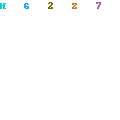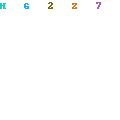Quick Heal is a relatively new antivirus program and is programmed in India. The software offers pretty basic antivirus protection but has a garnered a significant amount of interest. In fact, the program has received multiple accolades from Virus Bulletin 100 and Westcoast labs. The antivirus is similar to Rising Antivirus, and exhibits a special ability to detect viruses at their most likely source, developing PC markets.
Installation:
The Quick Heal installation took about 4 minutes to complete and included a quick initial virus scan. The initial scan is an important feature that most 2010 antiviruses now include.
One downside, the installation is cumbersome because a user has to register. This is midly counter intuitive because the user can actually deselect the free registration option. If this happens before an update is performed, a user will be unable to update due to non-registration. It is difficult to find where the free registration option is located. The required screens also have several required fields, which are annoying.
Interface:
The interface is definitely on the lacking side even when compared with the likes of Panda Antivirus. The interface also has problems when compared with other free competitors such as AVG and Avast; there simply aren’t many graphics to help novice users. The messenger application is also annoying because when there is a new message and little icon, in addition to the antivirus icon, will flash repeatedly from the taskbar.
On the positive side, there are helpful options on the main page of the Quickheal antivirus. For example, a user can disable all of the components or selective components with just the click of a mouse button. If a user were using Norton 2010, they would have to navigate multiple settings menu and eventually find a non-conspicuous place to disable the components.
The settings area is also well laid out because all of the antivirus modules can be easily tweaked. A user won’t necessarily have to navigate to many internal menus to change virus scan features or disable file extensions.
The help menu has a particularly good explanation of the features. For example, the help files will introduce the technology, explain how it works, and what happens if each a certain option is selected. I find this level of detail interesting because Quick Heal is based in India.
I ran into a problem when I would open Quick Heal multiple times. For example when opening a new item, Quickheal would also open a new window. However, the annoyance factor really depends on user preference. If a user likes many tabs to customize individual features than this could also be useful. However, the multiple Window approach significantly increased the memory burden on the test system.
Features:
Quickheal has a few notable features. The thing that I liked the most about all of the modules is that the DNA scan (zero day protection) can be enabled or disabled for each corresponding module.
Online Protection. Quick Heal offers an extensive network and online protection similar to free Avast. If any virus is detected via a download, a networked computer, or an email attachment Quickheal version 11 will immediately alert the user.
DNAscan. DNAscan as explained above offers zero day or unreleased virus protection. DNAscan will utilize heuristic protection to detect viruses for which there are no definitions available. If malicious activity or a virus is detected, Quick Heal will submit the file to it’s network defense center and users all of the world will be updated to defend against the new virus. This technology is very important because of fast emerging viruses in the wild.
WindowsSpy. This feature allows a user to drag a crosshair over any process or exe. Quickheal will then display all relevant information about the file and give the user an option to kill the process.
Packer Identification. I particularly like this feature because packers are becoming increasingly more common. Packers essentially put two programs together into one executable. For example, a hacker could bundle Firefox with some other program or virus. When a user clicks firefox.exe, the virus would also be loaded because both programs are packed together. Therefore, I particularly like the focus on a dedicated Packer Detection because Packers are becoming more prolific in today’s environment with advertising toolbars etc.
Registry Restore. The registry restore feature is also helpful because Quickheal automatically makes a backup of essential registry SAM files. If a virus makes a change to any of the registry items deemed undesirable, Quick Heal will automatically restore the registry.
Antimalware Detection. Quickheal version 11 includes antispyware and antimalware protection. This is unlike the likes of other free antivirus programs.
Advanced Logging. The logging features are also an advantage to this antivirus software. Quick heal keeps independent logs for each module. This will help a user identify if DNAscan (heuristic protection) maybe interfering with trusted applications.
Boot Scan. The boot scan is nice because it will scan all operating system components even before they are loaded into memory. This will prevent warnings such as “Access Denied” when most other antivirus programs attempt to delete in use viruses.
Virus Scanning and Detection:
Quickheal offers a variety of scanning methods. To start, Quickheal offers an automatic startup scan of critical areas such as the Windows directory or Memory. When a user clicks on the Quickheal icon to start the program, the software will run an additional memory scan.

Unfortunately, Quickheal does not offer a quick scan feature. Quickheal version 11 does have scan selection where a user can select various scan locations such as “My Documents”, “Windows Folder”, “Scan a file”, “Native Boot Scan”, “System Memory”, and “My Computer.” However, other manufactures typically include most of these features in convenient Quick Scans or Full System Scans buttons.
Virus Scanning is blazingly fast. A full system scan will take under 1 hour and the scan speed easily eclipses many of Quickheal’s competitors. I also really liked how detailed the scan status was. For example, Quick Heal will show how many archives are detected or I/O errors that may occur. In addition, a user can also view the report file as it is compiled and what settings are turned on for the desired on demand scan. The only thing that didn’t live up to my expectations was that there wasn’t an option indicating elapsed scanning time.
The virus scan detected all of the viruses on my virus hard drive. The virus scan also didn’t detect any false positives like other virus scans. 
Resource Usage:
Resource usage is pretty standard. The program uses about 14 megabytes when idle set across four different modules. When a scan is run, the program uses about 103 megabytes of RAM. I also like how a full system scan uses no more than 50% CPU power; it’s almost as if Quickheal sets up an invisible memory wall that it’s program will not pass. I really appreciate the emphasis Quickheal version 11 has put on using the fewest computer memory and CPU power as possible.
There is one problem with the memory usage and one that Quick Heal most correct in future releases. The various modules in Memory have malicious process names such as “Scanner.exe” or “Onlinent.exe”. Unfortunately, generic names such as these will make it hard for a novice user to distinguish good from bad processes. I didn’t find that regular use of Quickheal, let alone a full system scan, resulted in any noticeable slowdown of my computer. Quickheal version 11 is a very tightly coded program.
Uninstallation:
The Uninstallation was also very pleasant. All modules deleted as planned and there were few left over in the registry.
Conclusion:
Quickheal is an excellent antivirus with an extremely fast scanning engine. Quickheal was definitely designed by very talented coders because of it’s efficiency. Unfortunately, sometimes great pieces of software lack a great interface. However, Quickheal is a great antivirus software and definitely one that any user should consider.















